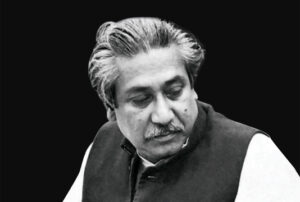-Rakibul Hasan
The world consists of silent majority of the young people. The youths are, in every nation, considered as the stockpile of endless power and potentialities that ensure the stability and maintain the structures within their state. So their role largely depends on who utilize this forces, what has been learnt them and how they are engaged in their responsibilities. For instances, in Egypt, the youths have brought about a revolutionary activism against the military autocracy. In Bangladesh, youths in large numbers, led the language movements in 1952, anti-autocracy movement in 1969 and a significant number participated in the liberation war in 1971. However, in Afghanistan and Pakistan, youths, followed by older leaders, greatly radicalized the Taliban terrorism.Generally the term youth, transitional stage of age, refers to a time of life that is neither childhood nor adulthood. The term youth refers to a person aged between 18 to 35. Most international bodies identify youths as individuals 15-24 years of age. Lower-limit ages sometimes drop below 15, and upper-limits can increase into the 30s. The United Nations draws a further distinction between teenagers (13 to 19) and young adults (20-24). The UN defines those aged from15 to 24 as youths, advocated by the UNICEF, the World Bank, the UNDP and the International Youths Foundation. But the African Union marks the youths who are between 15 and 35 years of age. USAID, in 2012, finds those as youths who are aged between 10 to 29 years and Save the Children ranges them from 13 to 25 years of age (Sommers, 2001:3).
Peace building, as a common definition, are efforts that follow peacekeeping and peacemaking to strengthen the positive relations between individuals and groups. So Peace building might encompass efforts at unity-building, reconciliation, relationship-building and establishing greater social cohesion.
John Paul Lederach, one of the leading scholars of peace building, describes of four features- relationship, curiosity, creativity and risk.
Truly, Peace building can be thought of an essential life skill. In schools and workplaces, homes and communities, Peace building can play a role in transforming the present and moving towards a future with greatly reduced incidences of conflict.
An important challenge in conceptualizing the youth’s role in Peace building is the complexity of categorizing ‘youths’. In contrast to children, who are covered under the UN Convention on the Rights of the Child (CRC), the ‘in between’ status of youths has been largely excluded the youths from the agenda of international peace and development efforts. Youths have entered public debate and discourse mainly as accomplices in crime, suicide bombers, soldiers, or simply rebels. So youths are still being identified as a ‘new target group’ in Peace building processes.
The role of youths in Peace building. By fighting poverty, especially the young people strive to build a stable and prosperous economy. The new generation, being interacted with world, pursue to build democratic societies, promote religious tolerance, and create youth activism for environmental protection. As responsibilities, government should reduce the high rate of illiteracy, respect for the views of the youths and promote gender equality
Youths are disproportionately affected by conflict. Several millions young people, being refugees, conscripted, and IDPs, in the world are currently displaced by armed conflicts. Many of them are exposed to violence, try to survive in acute poverty, and are separated from their families and communities. Besides, they are facing lack of education, health care, lack protection, sex crimes, severe trauma, livelihood opportunities, recreational activities, friendship, and family support.
Youths are key actors in peace building. Unlike Bangladesh, youths, as peace group, have very active role in community development, inter-ethnic dialogue and different cultural orientation. Thus they have been able to avoid violence and engage in Peace building. To bring a political standard, youths must participate in political arena. So every government strongly require to ensure foreign connections between youths and world youths communities, build constituencies for peace and orient youths leadership training and other social entrepreneurship and confidence building initiatives.
Youths are undergoing important transitions. Youths face a number of important transitions and circumstances. During the tensions, they get struck in ‘wait hood’ and unable to make transitions into adulthood with unemployment and frustrations. Hamilton states “Youths voices tend to go unheard by political and economic leaders (even by social scientists) unless they are raised as a revolutionary cry as an articulated threat to the social order” (2010:7)
Culture of peace and peace education. The social institutions inhabited by youths are fundamental to successful Peace building efforts if these teach peace education. The most important of these institutions is the school to grow culture of peace. At schools, they naturally learn communications and transformation of societal norms and expectations. Based on that they breed both the grounds for war and peace. Through their schooling experiences, youths can emerge prepared to regenerate conflicts or move beyond them.
Gandhi stated “if we are to teach real peace in this world, and if we are to carry on a real war against war, we shall have to begin with the children”
Peace building and conflict transformation. Peace building is ‘more than post-accord reconstruction’ and ongoing process of positive relations, behavior, attitudes, and structures. Peace can be defined as the absence of war, hostilities, quarrels and disagreements. Mungai (2007:16) argues that peace is not merely the absence of war but an existence of harmony and tranquility between humans and their environment. Sande (1997:39) says that peace does not necessarily mean the absence of conflict and strife and relevantly Johan Galtung argues two types of violence; direct and indirect violence. Here the indirect violence lies in the structures of the states. e.g. unemployment of the youths create frustrations and tensions within the society but there has not been used any weapons.
As Peace building challenges, youths are not homogenous group and either they are victims or perpetrators of violence. So there require a genuine commitment to youths engagement in Peace building. There exist many underlying causes, hatred for violence and protracted nature of ethno-political conflict that mobilize radical ideology and engage youths being brain-washed.
(The author is a Research Assistant at Bangladesh Institute of Peace and Security Studies (BIPSS) and a student in the Department of Peace and Conflict Studies of University of Dhaka. rakib_pacs@yahoo.com)



